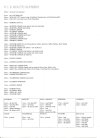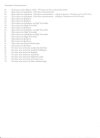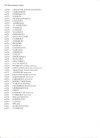If it's only on the front of the train, it would generally not be visible. Hence why it should be properly integrated into the CIS displays on train and off, like other railways do with route/train numbersI can't see it being that different. When there are multiple trains sharing a platform at New Street for example the route numbers will be visible for ages.
-
Our new ticketing site is now live! Using either this or the original site (both powered by TrainSplit) helps support the running of the forum with every ticket purchase! Find out more and ask any questions/give us feedback in this thread!
You are using an out of date browser. It may not display this or other websites correctly.
You should upgrade or use an alternative browser.
You should upgrade or use an alternative browser.
GWR 'Turbo' Headcodes Displayed
- Thread starter Deepgreen
- Start date
- Status
- Not open for further replies.
Sponsor Post - registered members do not see these adverts; click here to register, or click here to log in
R
RailUK Forums
birchesgreen
Established Member
Well the route number on the front of the bus is not visible if you are not in front of it either, not sure why you are making the distinction?If it's only on the front of the train, it would generally not be visible. Hence why it should be properly integrated into the CIS displays on train and off, like other railways do with route/train numbers
You can normally see the front of a bus for far longer (coming up the road, or at the stop itself) than for a train.Well the route number on the front of the bus is not visible if you are not in front of it either, not sure why you are making the distinction?
I don't see it as a particularly hard problem to overcome, just noting that implementation should be holistic so that at, e.g., New Street, the service code is visible on the screens whe checking for which platform to go to.
westinghouseB
Member
- Joined
- 19 Feb 2014
- Messages
- 8
Taken from a 2021 post on the subject.
Attachments
Not played around with that yet… does that affect the size of font displayed? Or just simply eliminate the number from display?You can suppress the route number (on Chiltern units at least) by entering "00" as the first two digits. It just comes up blank on the display.
Given the strength of headlights and the tunnels in and out of Marylebone; I actually find the display almost useful for visibility!
This topic crops up occasionally and can be explained as the southern region route codes being used, as they were for many years on the EMUs operating on the South Western/Central/Eastern regions. When the 165s and 166s were introduced, the system of route numbers was also then used on the Thames and Chiltern routes with the numbers being published in the relevant timetables. A quick search on ebay yields some of the numbers for the Thames route, with the combined timetable having showed the full set in the same way that the Chiltern one did. The original vultron PIS system used across the Networker fleet has now in many (all?) cases been upgraded, but I have also attached a segment of the driver schedule card showing the full 5-digit PIS code. The first 2 digits are the route code (01) and the last 3 are the station stopping pattern (021). View attachment 166684
View attachment 166682
I think this perfectly exemplifies why this is a terrible idea.
People like simplicity - not: I catch the 12 into work at 0722, but if it's 0818 it's an 86, if I go in at 0923 it's a 53...
That seems so much more complicated than just reading a timetable, because you then have to cross reference the number code to stopping pattern etc.
If you rolled it out wider, you'd standardise the stopping patterns into just a few combinations. You could use patterns for slight variations, such as Route '6' being to a station, but '61' being a train that stops short, or '65' being the opposite half of a skip-stop pattern or similar.I think this perfectly exemplifies why this is a terrible idea.
People like simplicity - not: I catch the 12 into work at 0722, but if it's 0818 it's an 86, if I go in at 0923 it's a 53...
That seems so much more complicated than just reading a timetable, because you then have to cross reference the number code to stopping pattern etc.
It won't be suitable for every area, but in commuter rail networks it could be very effective.
12LDA28C
Established Member
- Joined
- 14 Oct 2022
- Messages
- 5,058
I think this perfectly exemplifies why this is a terrible idea.
People like simplicity - not: I catch the 12 into work at 0722, but if it's 0818 it's an 86, if I go in at 0923 it's a 53...
That seems so much more complicated than just reading a timetable, because you then have to cross reference the number code to stopping pattern etc.
Seriously, nobody gives a stuff about the number on the front of the train and most don't even notice it. All they care about is the destination and stopping pattern.
RPM
Established Member
No, the destination font size is unchanged. It just leaves the number field blank.Not played around with that yet… does that affect the size of font displayed? Or just simply eliminate the number from display?
Given the strength of headlights and the tunnels in and out of Marylebone; I actually find the display almost useful for visibility!
DynamicSpirit
Established Member
You can normally see the front of a bus for far longer (coming up the road, or at the stop itself) than for a train.
While that's true, I don't think that's the main reason why route numbers are so well used and prominently displayed on buses: A bigger issue is that bus stops, even in busier locations, can be little more than a pole in the ground. Bus stops aren't staffed and until recently almost never had electronic information systems. Therefore, if more than one route served a particular stop, the ONLY way to tell where a bus was going was by bus itself displaying that information. Contrast that with stations, which these days almost all have electronic departure boards, and historically, before electronic boards existed, would normally have had staff on hand even at smaller stations to announce where a train was going to, hence it was almost never necessary to look at the train to know where it was going.
Also, route numbers are more useful for buses because they tend to have fixed stopping patterns: Other then for designated express routes, every bus serves every stop en-route, which means that a route number plus destination can be completely sufficient to identify whether the bus stops at your stop - and arguably is normally the most efficient way to convey that information. That's often not the case for trains where even trains running on broadly the same route can have highly variable stopping patterns, which means any information less than a full list of where the train stops is likely to be insufficient.
Deepgreen
Established Member
Quite - so take the large-ish number out and make the destination element bigger and clearer. I cannot understand why UK trains, if they have a mandatory destination indicator, can't have better and clearer ones - there has been a long string of awful ones (442s, 458s, 700 series, etc.). Just make them bigger and clearer - if LEDs can't be made to work properly so as to be clear in normal lighting conditions (why not?), then put 'paper blinds' back (to make them more bus-like). It is a sad reflection on the railway that clear destinations are seemingly so hard to provide.Seriously, nobody gives a stuff about the number on the front of the train and most don't even notice it. All they care about is the destination and stopping pattern.
Seriously, nobody gives a stuff about the number on the front of the train and most don't even notice it. All they care about is the destination and stopping pattern.
My point exactly! It seems like an idea dreamt up by someone who's a big fan of the German system and its simplicity/uniformity, but implemented in a typically British fashion - much like our ticketing system - requiring degree level study to actually understand.
norbitonflyer
Established Member
......which is exactly why only showing the ultimate destination of a train is pointless at best, and often downright misleading.even trains running on broadly the same route can have highly variable stopping patterns, which means any information less than a full list of where the train stops is likely to be insufficient.
SWR trains spend half their time displaying "Waterloo", which is obvious to anyone familar with which way is north/east. What people need to know is "does this train call at ............[insert name of station]". They don't even give via points, which would be helpful at, for example, Guildford, where there are three (and historically four) different routes to Waterloo.
It also misleads people into taking the Guildford stopper when they could have used the Portsmouth express. And it suggests, particularly for down trains, that the terminus is more imporant than anywhere enroute, (and feeds the obsession Control have with getting the train to the end of the line at all costs, if necessary by skipping the (much busier) intermediate stations, when the more customer-focussed solutiuon to getting the return working back on schedule would be what buses do - turn short (which is indeed why buses need destiation blinds as well as route numbers)
== Doublepost prevention - post automatically merged: ==
No it doesn't replace a timetable. And having multiple route numbers doesn't seem to be a problem for bus passengers - just as I know that I can use a 57 or a 131 (but no other) to get from Wimbledon to Kingston.People like simplicity - not: I catch the 12 into work at 0722, but if it's 0818 it's an 86, if I go in at 0923 it's a 53...
That seems so much more complicated than just reading a timetable, because you then have to cross reference the number code to stopping pattern etc.
No it doesn't replace a timetable.
I didn't say it does - I just pointed out a timetable is somewhat simpler.
And having multiple route numbers doesn't seem to be a problem for bus passengers - just as I know that I can use a 57 or a 131 (but no other) to get from Wimbledon to Kingston.
Which is all well and good, but when there is no pattern at all (as I pointed out in my original post), the bus analogy doesn't work. See the original post and quote - near enough every train was a different number, it wasn't as if there were 2x 55 an hour, a 86 and a 22, it was just random.
I'd challenge even the most ardent enthusiast to remember all those routes codes - at which point, the purpose is (and, as time has shown, was) lost.
Deepgreen
Established Member
I recall all the very many route codes in my youth (1970s) on the SR but that, of course, was when they were in normal use.I didn't say it does - I just pointed out a timetable is somewhat simpler.
Which is all well and good, but when there is no pattern at all (as I pointed out in my original post), the bus analogy doesn't work. See the original post and quote - near enough every train was a different number, it wasn't as if there were 2x 55 an hour, a 86 and a 22, it was just random.
I'd challenge even the most ardent enthusiast to remember all those routes codes - at which point, the purpose is (and, as time has shown, was) lost.
== Doublepost prevention - post automatically merged: ==
While I agree, it is a very different matter to reverse a train short of its destination than with a bus. The potential for further/other service disruption on anything like a busy route is very high, whereas a bus turning short has no measurable impact on other buses/road users.......which is exactly why only showing the ultimate destination of a train is pointless at best, and often downright misleading.
SWR trains spend half their time displaying "Waterloo", which is obvious to anyone familar with which way is north/east. What people need to know is "does this train call at ............[insert name of station]". They don't even give via points, which would be helpful at, for example, Guildford, where there are three (and historically four) different routes to Waterloo.
It also misleads people into taking the Guildford stopper when they could have used the Portsmouth express. And it suggests, particularly for down trains, that the terminus is more imporant than anywhere enroute, (and feeds the obsession Control have with getting the train to the end of the line at all costs, if necessary by skipping the (much busier) intermediate stations, when the more customer-focussed solutiuon to getting the return working back on schedule would be what buses do - turn short (which is indeed why buses need destiation blinds as well as route numbers)
== Doublepost prevention - post automatically merged: ==
No it doesn't replace a timetable. And having multiple route numbers doesn't seem to be a problem for bus passengers - just as I know that I can use a 57 or a 131 (but no other) to get from Wimbledon to Kingston.
Last edited:
- Status
- Not open for further replies.



